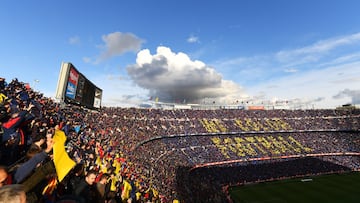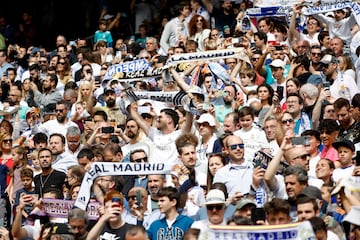EL CLÁSICO
Why are Barcelona fans called ‘Culés’ and Real Madrid fans ‘Vikings’?
We often hear supporters of Los Blancos refer to themselves as ‘Vikingos’ and Barça fans declaring themselves ‘Culés’, but where did those names originate?

Spanish football fans have grown up referring to FC Barcelona fans as Culés and Real Madrid supporters as Vikingos - and that’s how fans from both clubs proudly describe themselves. Both terms have been used freely among fans for years and are not in any way considered derogatory. The origins of both words have been widely discussed - even beyond Spain, and sometimes with different theories to how they came about.
Barcelona’s bums on seats
In the case of the Culés, the origin of the name is relatively clear. It dates back to the club’s early days when the team played at their first proper stadium. Barça was founded in November 1899 and spent their first season playing at the Velódromo de la Bonanova - on a pitch which they rented and shared with neighbours, FC Catalán, a club which was founded the previous month. From there, Barcelona moved to another temporary home, a makeshift pitch was set up on land adjacent to and owned by the luxurious Hotel Casanovas.
By this time, the club was gaining in popularity with several thousand spectators turning up to watch home games. But Barça still did not have a fixed home and were on the move again after just one season - first to a ground by the Carretera de la Horta, then to another by Calle Muntaner.
In March 1909, the club finally settled, after buying land on Calle de la Indústria (renamed Calle de París in 1922). However, the Camp del Carrer Industria, known locally as “La Escopidora” was not big enough to accomodate all of Barça’s rapidly growing fanbase. It had a capacity of 6,000 - but hundreds more were turning up for home games. Determined not to miss out on an afternoon of football, those that couldn’t get into the ground sat on the concrete wall which ran around the pitch perimeter. On matchdays, all you could see on Calle de la Indústria was a row of bottoms - the backsides of those following the action from the wall. The Spanish word for bottom is Culo, and the Catalan equivalent is Cul.
So the Barça fans who would watch games perched on the wall of La Escopidora soon became known as Culers in Catalan, or Culés in Castillian Spanish very loosely translated into English as The Bottomers, or Bleacher Bums…
Real Madrid’s ‘Norse’ code
It’s not quite so clear cut with Real Madrid’s Vikingos. There are different theories but the most common and the most plausible dates back to the mid-1970s. One claim is that the name was given to madridistas by the red and white half of the capital - Atlético Madrid fans began taunting Real Madrid fans in the early 70s, calling them Vikings in reference to the number of Danish and German players which president Santiago Bernabéu had been bringing to the club. Impressed with how Ajax and Bayern Munich had dominated continental football, Bernabéu started recruiting from northern Europe.

First, he signed Günter Netzer from Borussia Mönchengladbach in 1973, then Paul Breitner from Bayern the following year. Henning Jensen followed in 1976 and Uli Stielike in 1977. Unlike the generally dark, olive-skinned, Mediterranean-looking Spanish or South American players on Madrid’s books at the time, these northern Europeans had pale skin, long blonde hair and had bushy moustaches, fashionable in the day. They looked, to Atleti fans, just like Vikings - hence the nickname, which stuck and remains to this day.





